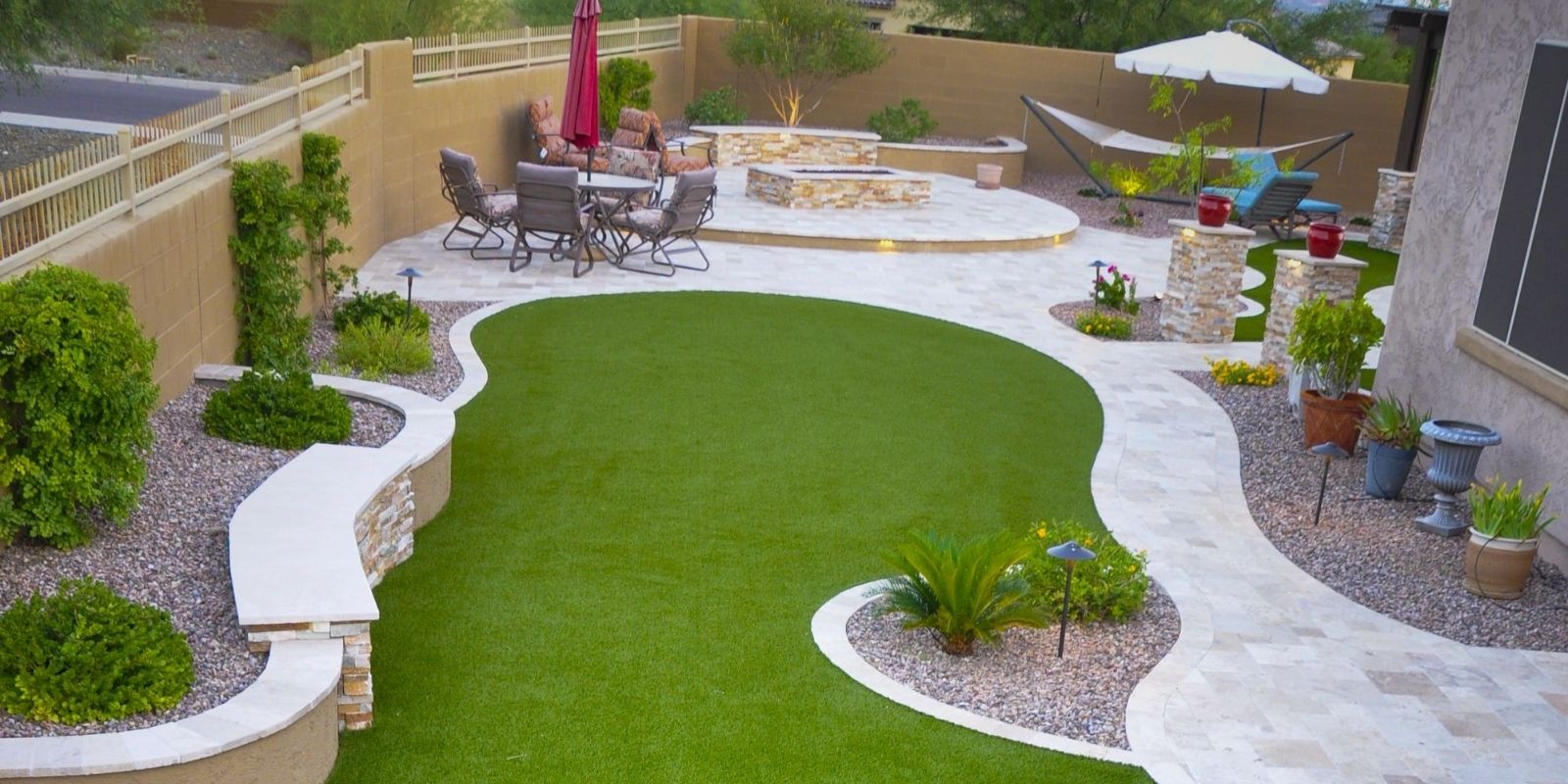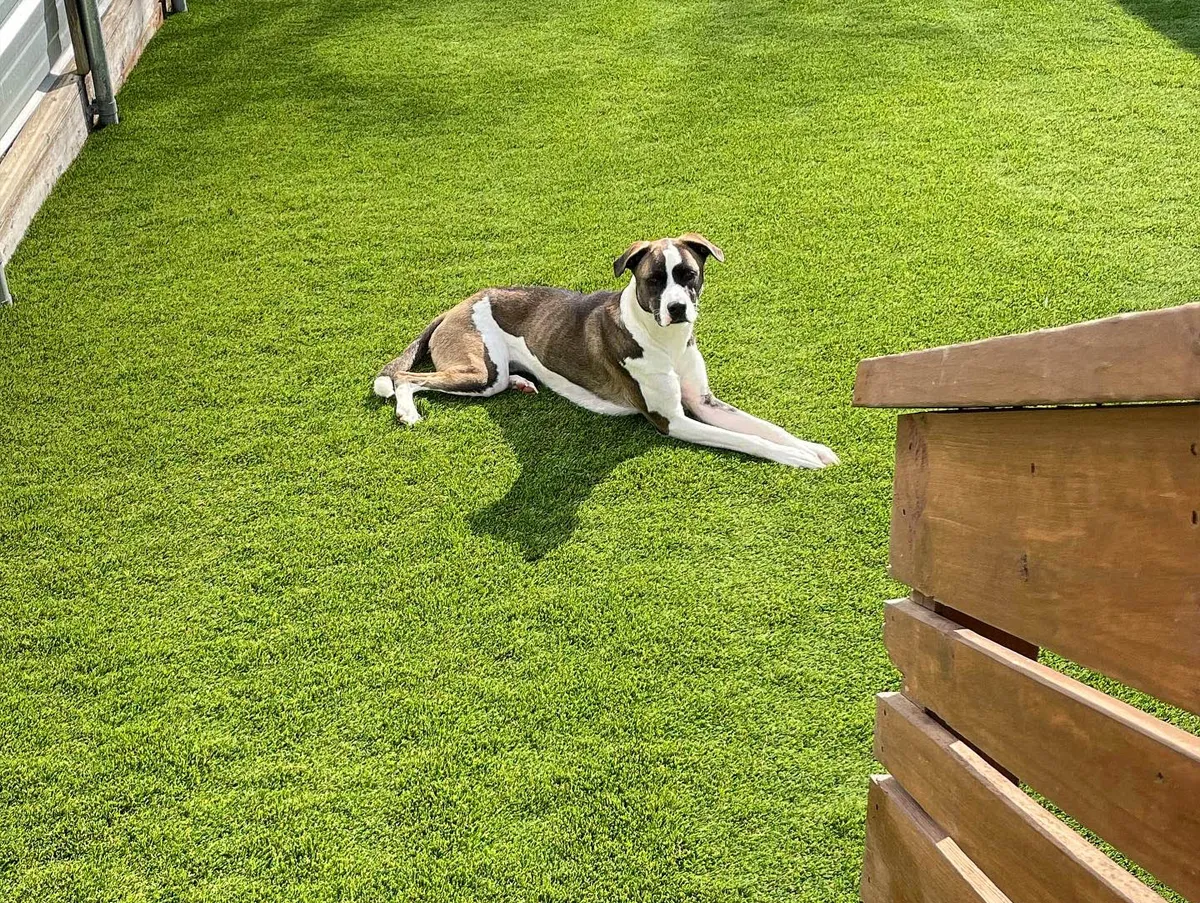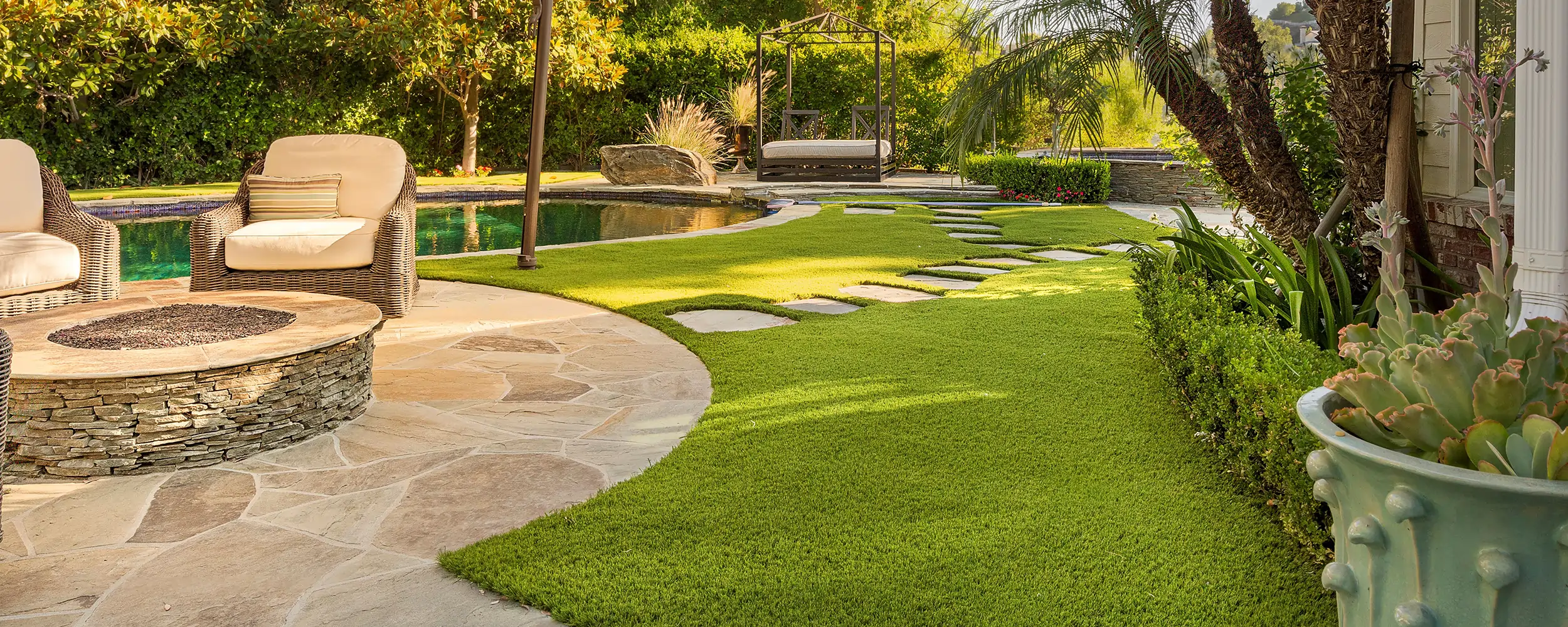Expert Arizona Turf Installation Services for Home and Business Use
Wiki Article
Look Into the Environmental Perks of Opting for Synthetic Grass Solutions
The adoption of fabricated grass options presents an engaging chance to address pressing ecological obstacles. By significantly decreasing water use and minimizing the application of unsafe chemicals, these options not only advertise lasting landscape design yet also secure regional communities.Water Conservation Perks
Among the most substantial advantages of fabricated grass is its ability to save water. Typical lawn yards call for significant watering, especially in areas susceptible to dry spell or water restrictions. On the other hand, man-made turf does not require watering, considerably decreasing the overall need for water resources. This attribute is particularly helpful in deserts where water shortage is a pressing issue.By removing the need for routine watering, synthetic grass adds to lasting landscape techniques and assists alleviate the ecological effect of excessive water consumption. Moreover, the conservation of water reaches the decrease of runoff, which can cause dirt erosion and river pollution.
Furthermore, the installation of synthetic grass enables property owners and towns to designate water resources much more successfully, concentrating on necessary usages such as alcohol consumption water and agriculture. The change towards synthetic turf not just promotes liable water usage yet also straightens with broader ecological objectives targeted at protecting natural deposits.
As areas increasingly prioritize sustainability, the water preservation benefits of synthetic grass present an engaging situation for its adoption in domestic and business landscaping projects.
Decreased Chemical Usage
The shift to synthetic lawn dramatically lowers the reliance on chemical treatments generally made use of in natural grass maintenance. Typical lawn management generally includes the application of chemicals, herbicides, and plant foods to promote growth and control insects. These chemicals can position threats to human wellness, regional wildlife, and the environment, adding to soil and water contamination.In comparison, man-made lawn gets rid of the requirement for these hazardous materials. By minimizing the release of artificial compounds right into the ecosystem, fabricated lawn advertises healthier soil and water systems.
Moreover, the lack of chemical drainage connected with synthetic grass installations assists secure regional rivers from contamination, supporting aquatic life and keeping biodiversity. Arizona turf. As neighborhoods significantly prioritize lasting methods, opting for fabricated turf offers a practical remedy that aligns with ecological preservation objectives. Through this change, property owners can appreciate rich eco-friendly spaces without endangering environmental wellness, leading the way for a much more lasting future
Lower Carbon Footprint

Moreover, the installation of man-made lawn can lead to significant water conservation. All-natural grass require significant quantities of water for irrigation, which not just contributes to the carbon impact related to water removal and treatment yet also stress regional water resources. On the other hand, synthetic grass needs marginal upkeep, requiring no watering, therefore significantly lowering water usage and its connected power prices.
Additionally, the long life of man-made turf contributes to its decreased carbon effect. With a life-span of approximately 15 years or even more, the need for frequent replacements is decreased, leading to much less waste and lower power intake in manufacturing and getting rid of conventional turf alternatives. Overall, man-made grass presents a sustainable choice for eco mindful landscaping.
Environment Preservation
Habitat preservation is an important factor to consider in the debate over landscape design choices, especially when comparing artificial grass to all-natural turf. Natural yard yards often need substantial maintenance, consisting of the use of plant foods, chemicals, and herbicides, which can detrimentally impact local ecological communities. These chemicals can seep right into the dirt and rivers, harming native vegetation and fauna and disrupting neighborhood environments.
Artificial grass gets rid of the need for unsafe chemicals, consequently safeguarding nearby wild animals and keeping the honesty of surrounding ecological communities. The setup of artificial turf can lead to the conversion of former yard areas into even more biodiverse landscapes, such as pollinator gardens or native plant areas, which can support local wildlife.
Ultimately, the shift to fabricated grass not just preserves water and decreases maintenance efforts however likewise promotes an extra unified relationship in between human activities and the native environment, advertising environment preservation in the procedure.
Long-Term Sustainability
Long-term sustainability is a crucial consider examining the benefits of man-made grass over traditional lawn yards. One of one of the most significant benefits of synthetic grass is its sturdiness; it can last as much as 15-20 years with marginal maintenance, whereas all-natural yard requires frequent reseeding and substitute. This long life minimizes the demand for constant resources, such as water, plant foods, and pesticides, which are vital for keeping a healthy turf yard.In addition, synthetic turf contributes to a decrease in carbon about his exhausts connected with lawn care devices. Standard yards often call for gas-powered mowers, leaners, and blowers, all of which add to air contamination. Turf installation phoenix az. In comparison, man-made turf gets rid of the requirement for such equipment, promoting a cleaner environment
In addition, the manufacturing of fabricated turf increasingly utilizes recycled materials, enhancing its sustainability account. As producers embrace green practices, the environmental footprint find of man-made lawn continues to lessen.

Final Thought
The fostering of synthetic grass solutions provides considerable ecological advantages, consisting of considerable water preservation, minimized reliance on harmful chemicals, and a lower carbon impact. In addition, fabricated grass aids in preserving all-natural habitats by reducing land disruption and advertising long-lasting sustainability via the usage of long lasting products. Jointly, these aspects highlight the capacity of synthetic grass to contribute positively to ecological health and provide a practical option to standard landscape design techniques in a progressively resource-conscious world.In contrast, man-made turf does not need watering, considerably reducing the total demand for water sources. By lessening the launch of artificial substances right into the ecosystem, artificial turf advertises much healthier dirt and water systems.
Furthermore, the installation of man-made turf can result in considerable water preservation. In comparison, fabricated lawn requires very little maintenance, requiring no watering, therefore substantially lowering water usage and its linked power prices.

Report this wiki page